Realme X50 5G Review
An absolute triumph
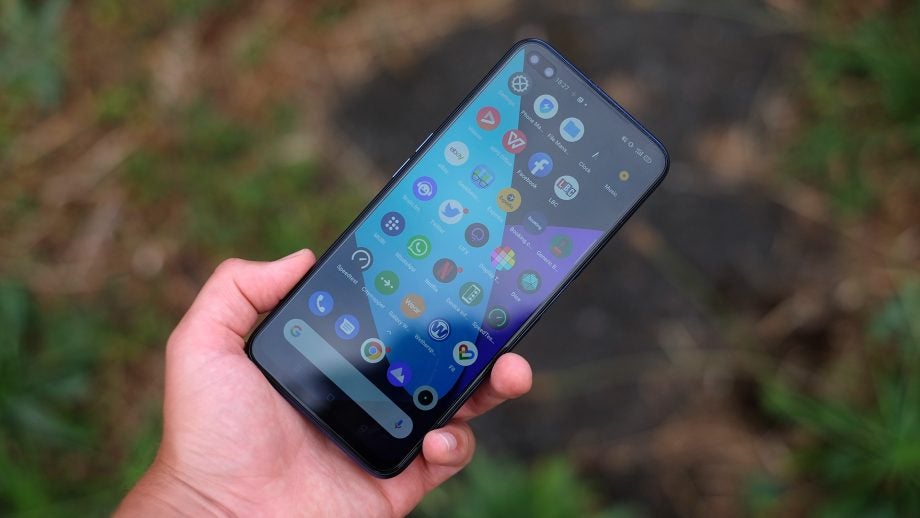

Verdict
The Realme x50 5G is a superb buy, and should be the gateway to 5G for many cost-conscious shoppers.
Pros
- Very good battery life
- Low price for a 5G phone
- Well-specced 120Hz screen
- Strong general and gaming performance
- Surprisingly capable main camera, even at night
Cons
- Two of the rear cameras are filler
- No headphone jack
Key Features
- Review Price: £299.99
- Snapdragon 765G CPU
- 6GB RAM
- 128GB storage
- 48/8/2/2MP rear cameras
- 16/2MP front cameras
- 6.57-inch 2400 x 1080 120Hz LCD screen
- Fingerprint reader
- 4200mAh battery
The Realme X50 5G is one of the boldest mobile phones statements of 2020. It’s a sub-£300 phone with 5G. And it significantly undercuts the OnePlus Nord, which already seemed a bargain.
That’s your two-sentence sell. But the Realme X50 5G also offers a whole stack of other benefits over the many other excellent phones at £200-300.
It has a glass back, not a plastic one. The screen is a 120Hz display with wide colour gamut support. And the main camera is significantly better at night than most of the competition, and not too far off the Google Pixel 4a.
The Realme X50 5G is a colossal bargain, and while some slightly cheaper phones have much larger batteries, it even outlasts almost all flagships phones off a charge. Finding things seriously wrong with this phone, at £300, is not easy.
Related: Best cheap phones
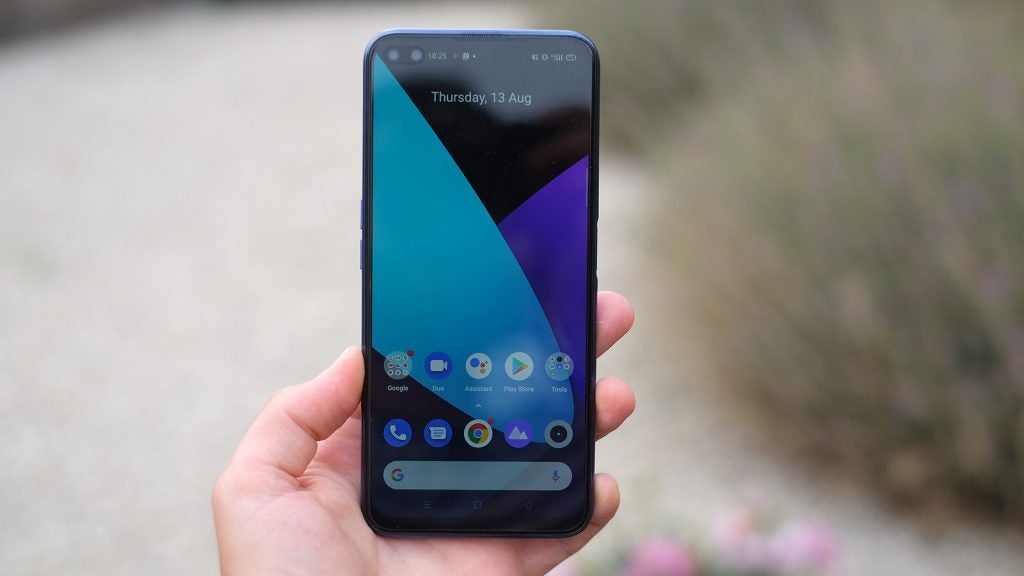
Design – The Realme X50 5G feels great to hold
There are two important elements to the Realme X50 5G’s design that separate it from other phones around this price. One is good, one not so good.
Let’s start with the positive one. The Realme X50 5G has a curved Gorilla Glass back.
A few years ago this would have been pretty normal for a £300 phone, but it is becoming increasingly rare. Even the Samsung Galaxy Note 20 has a plastic back, a phone almost three times the price.
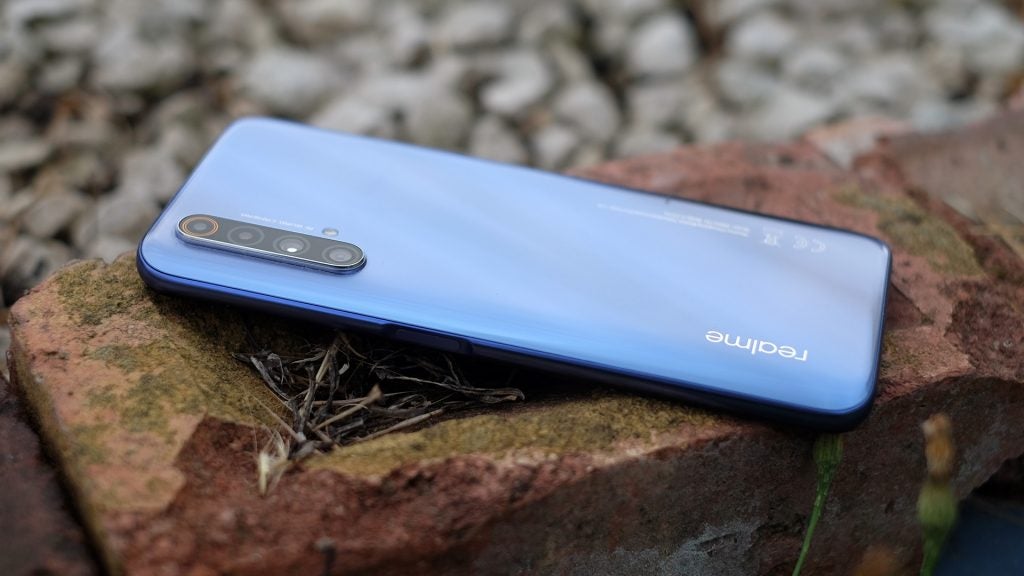
Some think this doesn’t matter. Plastic won’t shatter like glass, and if you have a silicone case on, which I’d recommend, you won’t notice anyway.
Fair enough. But phones are made of metal and glass for a reason. They feel nicer, and their relative hardness makes them much less likely to pick up scratches and scuffs from light contact.
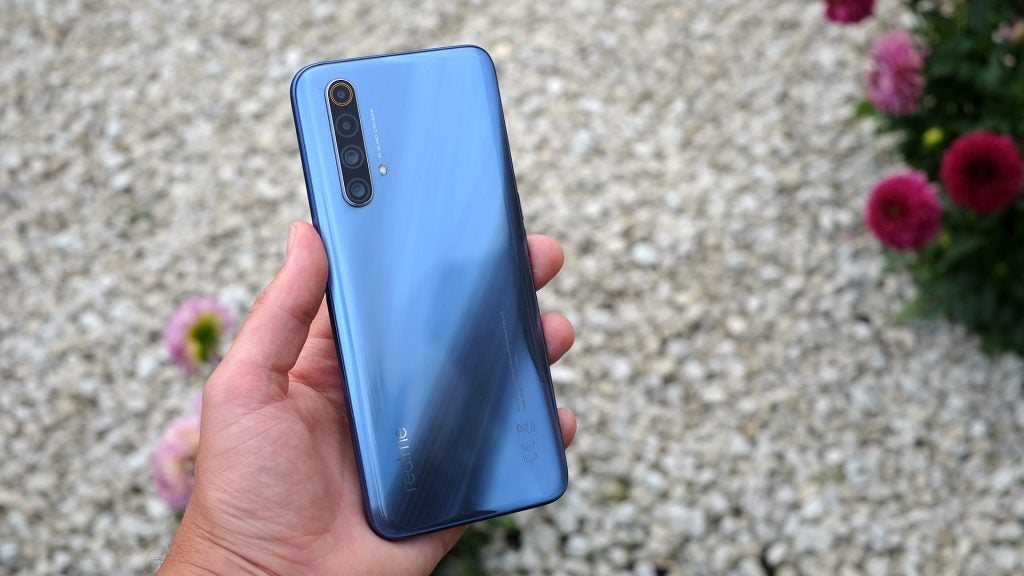
That’s the crucial “good bit” done. The bad part is that the Realme X50 5G does not have a headphone jack, most likely because it wants to be seen as a high-end phone.
However, this is still an obvious choice for someone who wants a good upgrade but doesn’t want to spend stacks of cash, on fancy wireless headphones for example. And I love being able to use the pair of Sennheiser Momentum wired headphones I’ve owned for years.
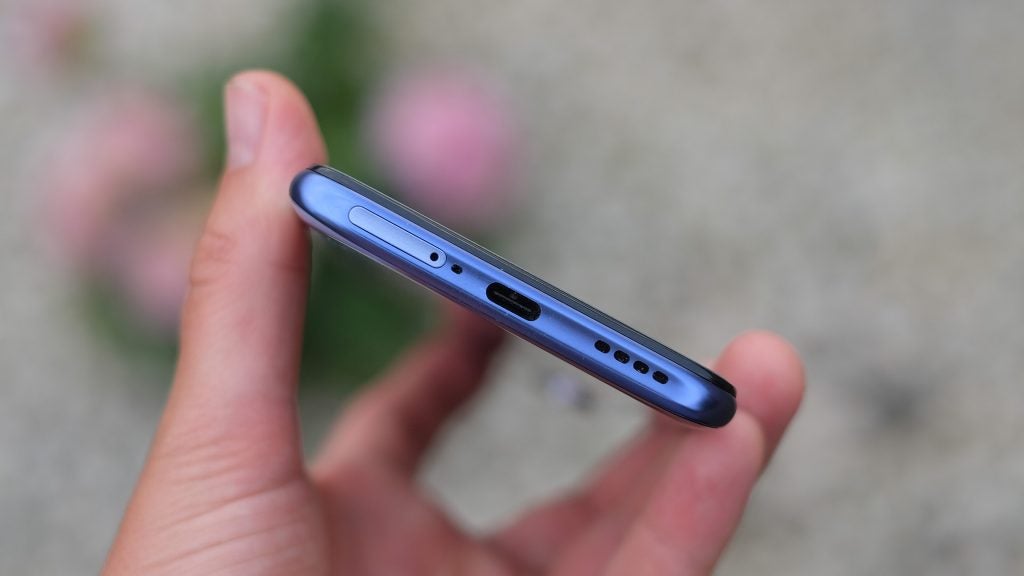
The rest of the Realme X50 5G is fairly similar to the many phones available at the price, or slightly less. It’s a large-screen phone so is not a petite pocket rocket like the Google Pixel 4a.
Its sides are plastic rather than aluminium, just like the OnePlus Nord’s, and it is not waterproof.
The camera housing on the back is better-looking than some, but there is a stack of phones that look and feel quite similar to this one. I am a big fan of its fingerprint scanner, though.
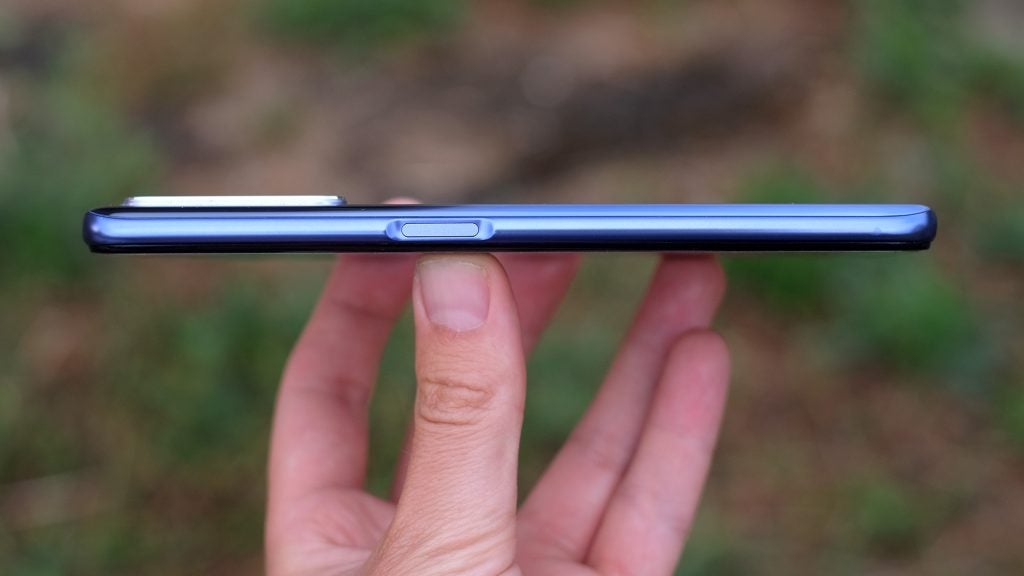
It’s side-mounted, doubles as the power button, and is extremely quick. You can choose whether it unlocks with a light touch or a proper press too. I use the press, and it’s quick enough to make you forget any finger scanning is even going on in the background.
Screen – 120Hz at this price is fantastic
This finger scanner and the 120Hz screen have a big part in making the Realme X50 5G feel as snappy as it does.
Fitting in a 120Hz screen is a remarkable stretch at the price, and makes scrolling through Android’s app drawer feel more fluid. Even if those apps are scrolling by at the same pace, the perception is the Realme X50 5G is faster than the 60Hz rivals.
I was not a high refresh rate convert at first when such phones popped up in 2019. I’d rather see my films at 24fps, and I think additional processor headroom in games is better spent on improved texture quality and detail than ultra-high frame rates. But 120Hz at £299? I’m all in.
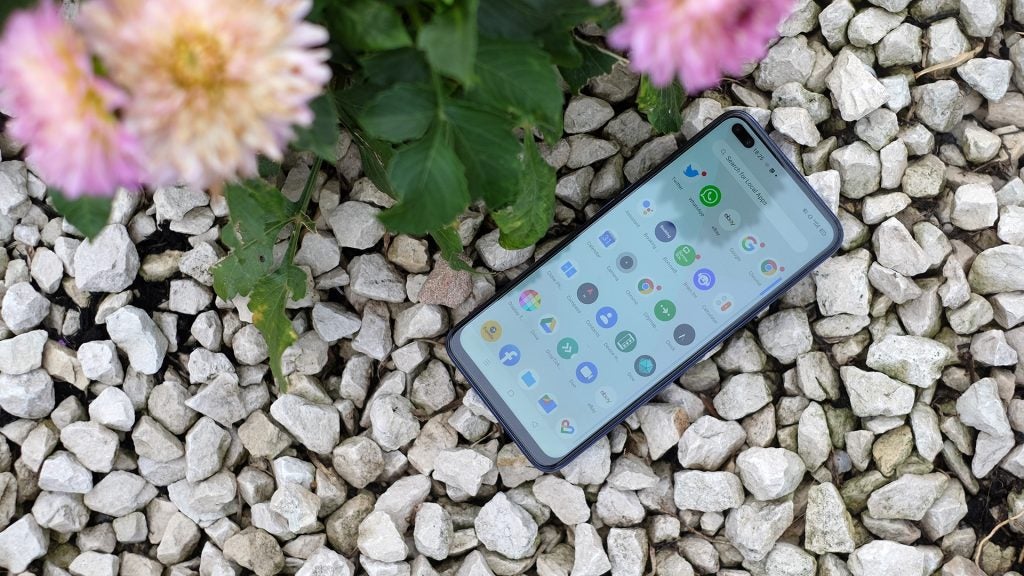
The Realme X50 5G does not have as immediate display “pop” as the OLED Samsung Galaxy M31. But it is otherwise a technically superior display in several respects beyond refresh rate.
The Realme X50 5G supports HDR, for example, and wide gamut colours. Almost all sub-£300 phones do not, including the OLED Samsung Galaxy M31.
Outdoors brightness is good, if predictably not as powerful as a true high-end phone. And as the Realme X50 5G has two front cameras than one, there’s a larger punch hole. Still, 16:9 videos don’t get close to reaching the cut-out unless you crop the frame, so it doesn’t matter too much.
The Realme X50 5G also has one of the larger screens in its category, at 6.57 inches diagonal. This is bigger than the OnePlus’s Nord’s 6.4-incher, and much bigger than the Pixel 4a’s screen.
It’s good for games and media, if not quite ideal for your pocket. Don’t buy the X50 5G is you want a small phone.
Software and Performance – A winner across the board
The Realme X50 5G runs Android 10 and a custom interface called Realme UI. I made a few tweaks to it in the first five minutes of use.
First, it doesn’t use an app drawer by default. And I’ll always add the drawer back in if I can. You can do so here.

It also didn’t fit all that many app icons into each screen. You can tweak this too. These alterations applied, the Realme X50 5G seems as close to a clean and simple Android interface as any Moto G phone.
You can stray further too if you like. Realme UI offers a bunch of neat tweaks hidden in the settings menu, like the ability to change the shape of app icons, alter their size with fine-grain control and even play with the size of the graphic within the icon.
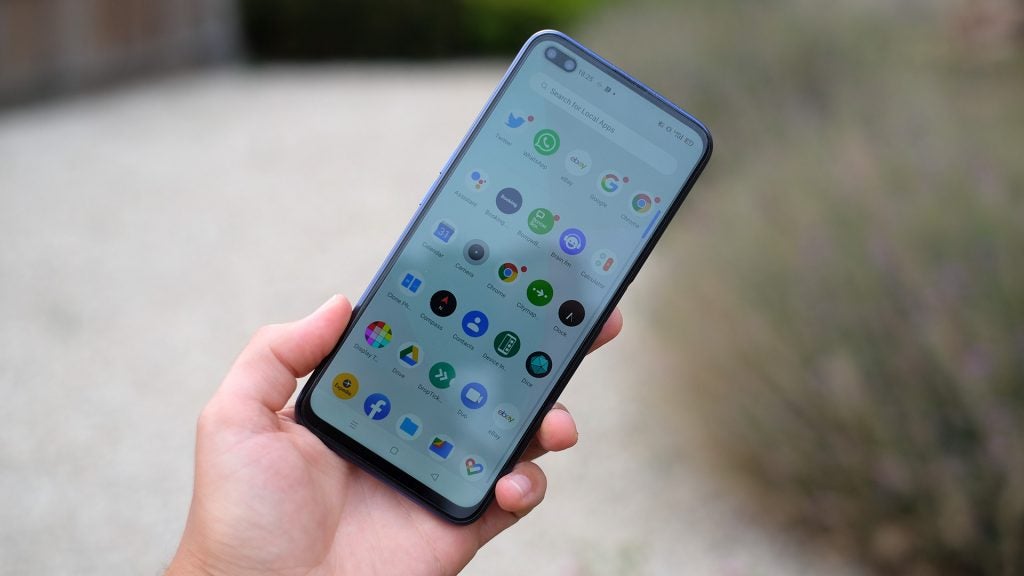
Experiment with this for a minute and suddenly the Realme X50 5G’s interface gains a whole different visual personality. I quickly returned to the default setting, though, because it already looks more tasteful than anything I could cook up.
The phone’s slinky transitions don’t change with these tweaks. And, once again, the Realme X50 5G’s 120Hz screen makes meaningful improvements to how the software comes across.
The Snapdragon 765G processor deserves much of the credit here. This is probably the single most important CPU in the effort to make 5G mainstream, so it’s no wonder Qualcomm may have made extra efforts to get this one right.
The general performance it provides is excellent, and Fortnite shows the significant benefits it offers over something like the Snapdragon 665. That’s the Qualcomm chipset you’re most likely to get if you spend just slightly less.
You can play Fortnite at Epic graphics with the resolution slider set to max fairly comfortably. It does not stay at 30fps, with frequent drops to 25fps, but this is still much better than many. Phones with the Snapdragon 665 and Exynos 9611 CPUs tend to hover around 20fps with the graphics lowered.
This is yet another example of why the Snapdragon 765G CPU sits in such a tasty sweet spot. You can play all current high-end games at their top settings without making them too stuttery.
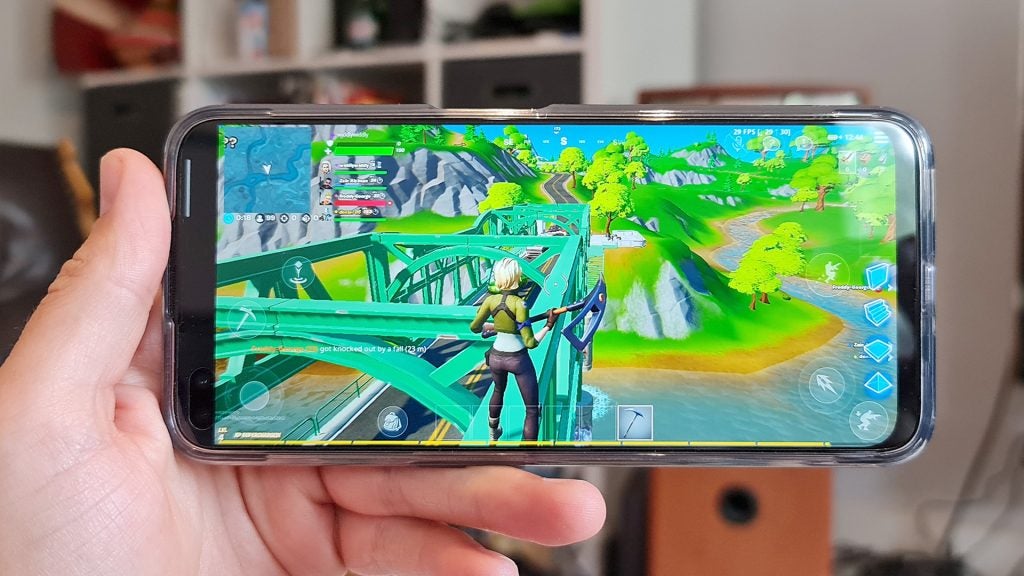
I recorded slightly poorer benchmarks results with the Realme X50 5G than the OnePlus Nord. It scores 1832 (595 per core) in Geekbench 5, to the Nord’s 1940 (606 per core).
Speaker quality is similar too. The Realme X5 5G has good sound projection and volume, and enough mid-range substance to make voices sound good. However, you only get a single driver on the bottom.
Camera – Quad cameras in cheaper phones have become a box-ticking obsession
Did I miss a memo? For some reason, almost every single affordable phone that isn’t outright cheap now has to have four cameras on the back.
And almost every single time 50 per cent of those cameras are largely pointless. The Motorola Moto G8 Power is one notable exception, as it has a reasonably useful 2x zoom camera.
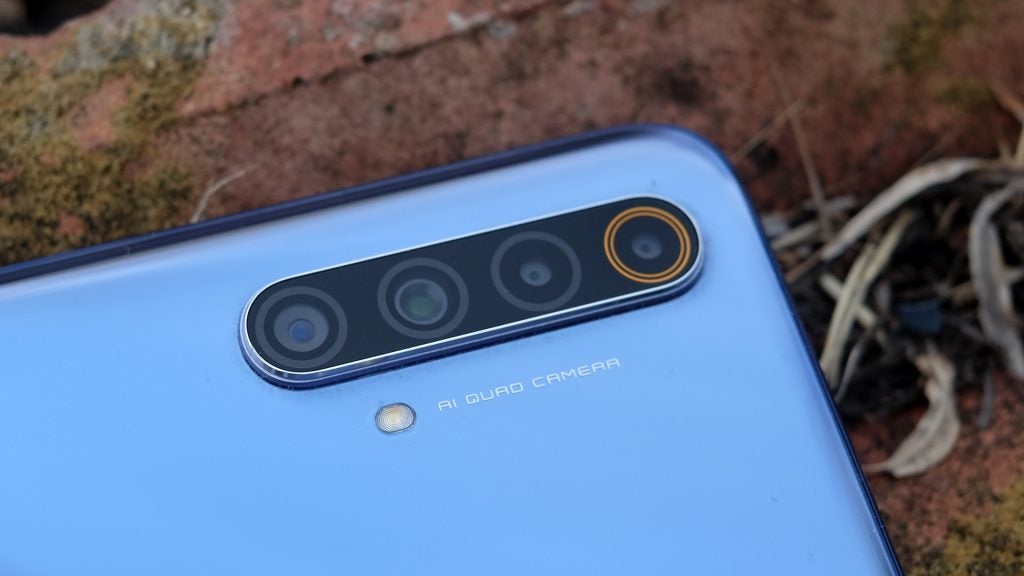
However, it’s happened again with the Realme X50 5G. The phone has a main 48-megapixel camera, an 8-megapixel ultra-wide, and two 2-megapixel sensors used for dreadful undersaturated macro images and to help the background blur of the Portrait mode.
Realme might as well use the wide for this parallax-calculating purpose, given how low-quality the depth sensor is. There’s no zoom, and while you can zoom in to up to 5x, I’d avoid the 2x and 5x if you can. They just use digital zooming, which does not look great.
Quad cameras in cheaper phones have become a weird box-ticking obsession. But there is some good news.
The Realme X50 5G has one of the best primary cameras you can get at the price, even if it won’t quite match the Google Pixel 4a.
I put it up against the Moto G8 Power, Xiaomi Redmi Note 9, Oppo A72, Samsung Galaxy M31, TCL 10L and OnePlus Nord to see how it compares.
In daylight it is only matched by the Nord. Its images are bright and punchy without overexposure, there’s plenty of shadow detail and image sharpening is not too aggressive.  The Portrait mode can blur out the background of standard shots as well as those of people
The Portrait mode can blur out the background of standard shots as well as those of people
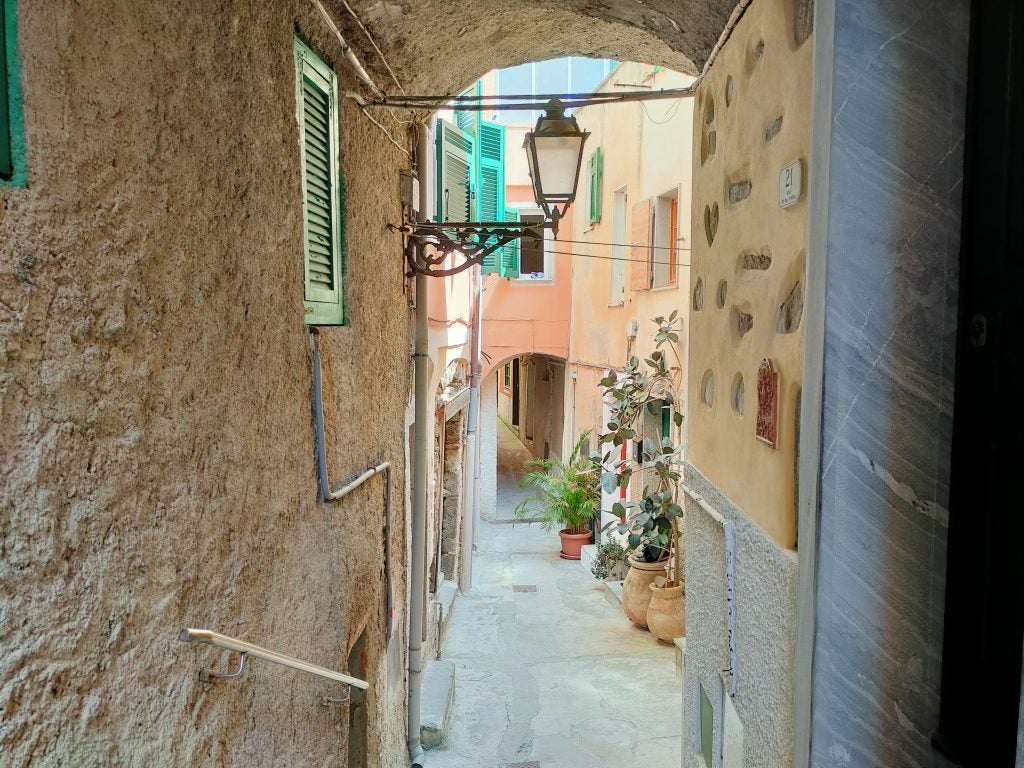
Low-light photos are surprisingly good, as long as you use the Realme X50 5G’s Night mode. This usually takes 2-3 seconds to capture an image, and creates a single image out of several merged exposures.
It dramatically improves dynamic range, bringing out the cloud contours of moonlit skies very well, more so than almost any other phone below £300.

The Realme Night mode is one of the best at the price. It yields great results.

The ultra-wide camera is, as ever, a useful and welcome add-on. But like every phone in this category, the hardware is a step down in quality from the primary camera.
It’s an 8-megapixel sensor with a lens that is prone to purple fringing in well-lit scenes. However, there’s still plenty to like. You can use the Night mode with the ultra-wide and it has great lens distortion correction, so your shots don’t have the characteristic “bent” look of a fisheye lens.
Here’s a good example, where the geometry of the scene looks straight even shot wide.
Non-wide

Wide
This comparison also shows the wide camera’s limits. Dynamic range is lower, colour is less refined and there are a lot of unwanted purple tones when you look up close. Still, the wide also makes it much easier to capture photos of looming buildings, like this:
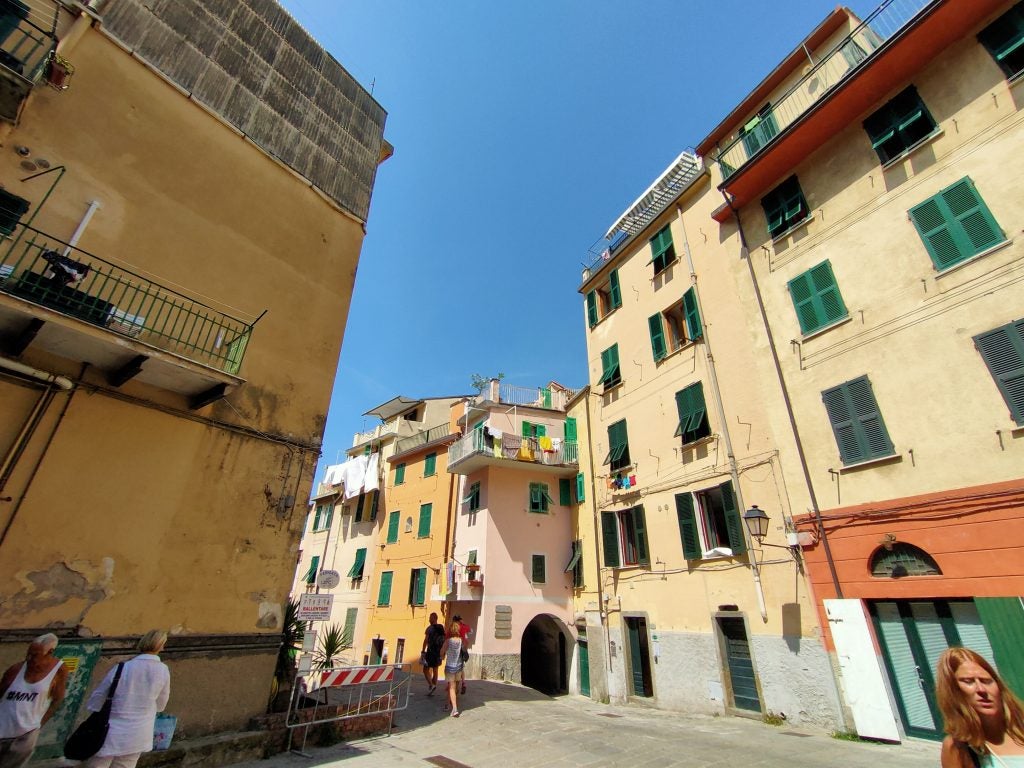
Lens correction makes the buildings look straight, not curved, but it can’t quite fix the distortion of the figures in the image’s corners.
There are a few compromises on the video side, but nothing alarming. The Realme X50 5G can shoot 4K video at 30 frames per second, but not the 60fps it can capture at 1080p. You lose electronic stabilisation at 4K too, so you’ll often be better of sticking too Full HD anyway.
The phone also has a super stable mode, which uses the ultra-wide sensor and an extreme crop for extra electronic stabilisation power. It’s handy, but only use it if you want to capture mountain bike rides or something similar. Video quality is significantly worse when using Ultra Stable.
Still, this is the case with every phone that has this feature, including ones three times the price.
The Realme X50 5G has two front cameras. There’s a 16-megapixel main sensor and a simple 2-megapixel camera used to let you blur out the background in your selfies.
I may not like the depth camera on the back, but this one justifies itself as most phones at the price don’t let you blur the background in selfies. Image quality is very good at the price. You’ll see good detail in well-lit rooms, and the image integrity holds up better in low light than most phones at £200-300.
Battery Life – The Realme X50 5G can take a full day of fairly heavy use
The Realme X50 5G has a 4200mAh battery. This is smaller than several of the cheaper alternatives.
There’s a slew of 5000mAh phones available at £200-300, like the Xiaomi Redmi Note 9, Motorola Moto G8 Power and Oppo A72. Samsung is the surprise king of battery life at the price. Its Galaxy M31 has a huge 6000mAh battery.
However, I’m more than happy with how the Realme X50 5G lasts. It can take a full day of fairly heavy use, and actually performs better than expected given its capacity. I have never worried about it running out, and on a light day it may even finish up with 40-50% charge left.
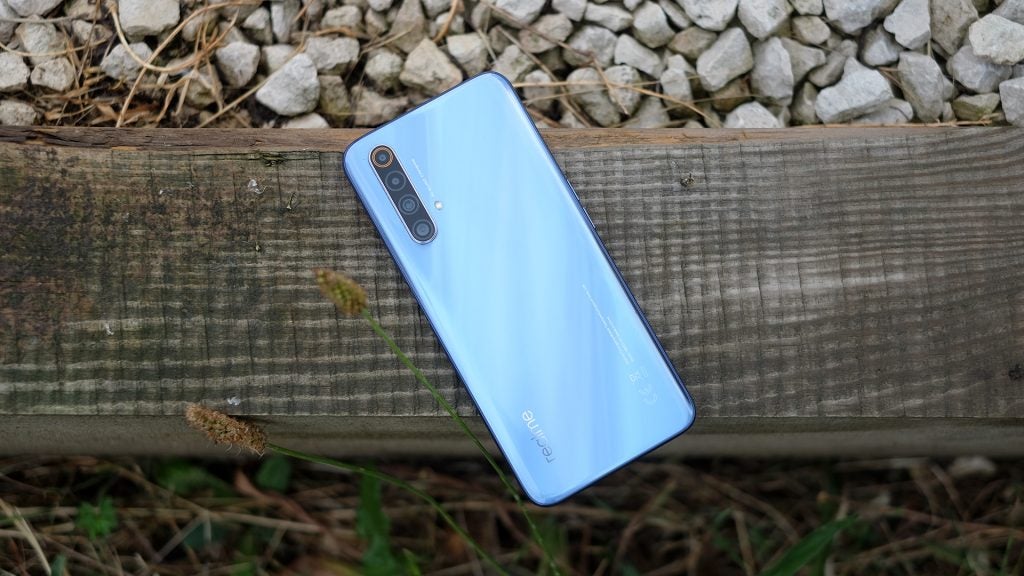
It outlasts the OnePlus Nord, based on my anecdotal experience. This doesn’t make a great deal of sense if you look at the numbers. The Nord has a significantly smaller screen and only marginally lower battery capacity (4115mAh). Both phones lose 8% charge after streaming a 90 minute movie over Wi-Fi too.
This suggests the Realme X50 5G is likely more restrictive in its handling of background processes, curtailing all but the essentials. You could argue this means its 6GB RAM is a little wasted, as it allows for faster hopping between parked apps, but notifications never seemed slow to appear. And that ultra-reliable real-world stamina is actually closer to what I’d expect from a 5000mAh phone.
The Realme X50 5G also has great charging. It uses Oppo’s Dash charging system, with power output of up to 30W.
Should you buy the Realme X50 5G?
The Realme X50 5G is one of the best mobile deals of 2020. It has 5G, a large 120Hz screen, a very competent processor, fast charging and good general camera performance for £300.
A whole bunch of slightly cheaper phones last even longer off a charge. And, like almost every quad-camera phones at the price, you get one good camera, one so-so one and two duds.
However, at this point Realme likely feels obligated to include the “filler” lenses to avoid seeming less fully-featured than cheaper rivals.
Should you upgrade to the OnePlus Nord or Pixel 4a? The OnePlus has a cuter design, a slightly smaller OLED screen and an in-screen fingerprint scanner. Consider the switch if you want something smaller.
The Pixel 4a is smaller still, but the camera is the real reason to buy. While the Realme is a great performer at its price in almost all conditions, the Pixel 4a’s processing is of the class above.
Want the most tech for the least cash? Buy the Realme X50 5G.


